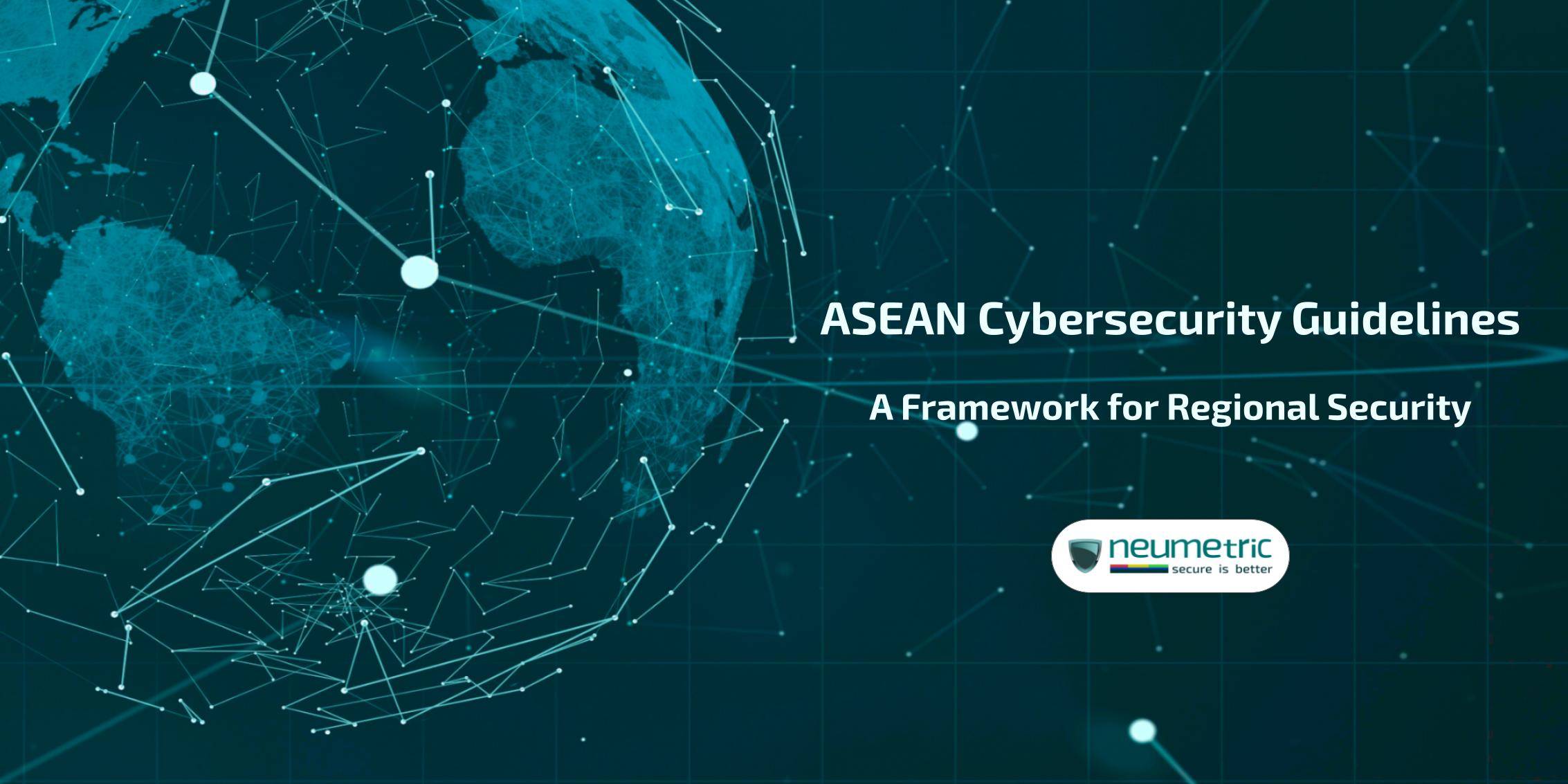Table of Contents
ToggleIntroduction
ASEAN or the Association of Southeast Asian Nations, is a regional intergovernmental organisation comprising ten member countries in Southeast Asia. Formed on August 8, 1967, its primary objective is to promote regional cooperation & economic integration among its member states, fostering political & economic stability in the region.
In the contemporary digital era, the significance of cybersecurity within ASEAN has surged to the forefront, given the escalating challenges posed by cyber threats. It’s important to illuminate the landscape of cybersecurity in the ASEAN region, examining its historical evolution, the response mechanisms initiated by member states & the development & implementation of the ASEAN Cybersecurity Guidelines.
As societies become increasingly interconnected in the digital realm, understanding & addressing the complexities of cybersecurity are paramount to ensuring the collective security & prosperity of the ASEAN community. The focus crystallises on the ASEAN Cybersecurity Guidelines, a framework designed not just to respond to contemporary threats but to proactively shape the region’s cyber resilience.
The Evolution of Cyber Threats in ASEAN
Historical Landscape of Cyber Threats
The history of cybersecurity in the ASEAN region reveals a progression from sporadic incidents to a complex & sophisticated threat environment. Early cyber threats were characterised by simple malware attacks, evolving over time into highly coordinated & advanced campaigns that shaped the region’s cybersecurity approach.
Challenges in the Digital Age
In the contemporary digital age, ASEAN faces new & formidable challenges. The proliferation of ransomware, phishing attempts & advanced persistent threats (APTs) poses substantial risks to the region’s digital infrastructure. Additionally, technological advancements like the Internet of Things (IoT) & artificial intelligence contribute to the complexity of the cybersecurity landscape.
Impact on ASEAN Countries
The consequences of cyber threats extend beyond the digital realm, affecting ASEAN economies, national security & critical infrastructure. As societies become more digitally interconnected, the vulnerabilities increase. Privacy concerns, identity theft & cyber-enabled disinformation campaigns are pressing issues that demand attention in the face of evolving cyber threats.
Regulatory & Policy Responses
In response to the evolving threat landscape, ASEAN countries have implemented regulatory & policy measures to bolster cybersecurity. However, the fragmented nature of these responses underscores the need for a more coordinated regional approach. Cross-border cyber threats necessitate collaborative efforts to effectively address the interconnected challenges faced by ASEAN nations. This sets the stage for an exploration of ASEAN’s comprehensive response through the establishment of the ASEAN Cybersecurity Guidelines.
ASEAN’s Response: The Need for Cybersecurity Guidelines
Overview of the Current State of Cybersecurity in ASEAN
In navigating the complex realm of cybersecurity, ASEAN has confronted a landscape marked by evolving threats, both in scale & sophistication. This section delves into the present state of cybersecurity within the association, examining the challenges faced by member states & the imperative for a collective response.
Importance of a Unified Cybersecurity Approach
As digital threats transcend national borders, the necessity for a unified approach to cybersecurity becomes increasingly apparent. This subsection explores why a coordinated strategy is paramount, highlighting the interconnected nature of cyber risks & the potential for cross-border impact.
The Role of Regional Collaboration in Addressing Cyber Threats
ASEAN’s response to cybersecurity challenges is rooted in regional collaboration. This part underscores the significance of collective action, emphasising how cooperation among member states can bolster the effectiveness of cybersecurity measures. It explores joint initiatives, information sharing & collaborative frameworks aimed at mitigating the diverse array of cyber threats faced by the ASEAN community.
By understanding the current landscape, the imperative for unity & the collaborative strategies in play, we unravel ASEAN’s proactive response to the pressing need for cybersecurity guidelines in the region.
Development of ASEAN Cybersecurity Guidelines
Initiatives & Efforts by ASEAN Member States
ASEAN member states have been proactive in addressing cybersecurity challenges. Initiatives range from policy developments to technology investments. Countries like Singapore & Malaysia have implemented comprehensive strategies, emphasising the need for a robust national approach to cybersecurity.
Collaboration with International Cybersecurity Organizations
Recognizing the global nature of cyber threats, ASEAN actively collaborates with international cybersecurity organisations. Partnerships with entities like INTERPOL & CERTs from various countries facilitate information sharing & joint responses to cyber incidents, reflecting a commitment to a united front against global cyber threats.
Key Components & Principles of the Cybersecurity Guidelines
The development of the ASEAN Cybersecurity Guidelines stems from a thorough understanding of cybersecurity principles. Core components include robust risk management, cross-sector collaboration & resilience-building measures. The guidelines encapsulate the essence of a comprehensive cybersecurity strategy tailored to the unique challenges faced by ASEAN nations.
Understanding the Framework
Overview of the ASEAN Cybersecurity Guidelines Framework
The ASEAN Cybersecurity Guidelines framework serves as a comprehensive blueprint for the region’s digital resilience. It encompasses a multi-faceted approach, addressing technical, legal & collaborative aspects of cybersecurity.
Core Principles Guiding the Framework
At the heart of the ASEAN Cybersecurity Guidelines are core principles that define its efficacy. These principles encompass proactive risk management, cross-border collaboration & a commitment to continuous improvement. Understanding these foundational elements provides insight into the framework’s resilience-building philosophy.
Specific Areas Covered by the Guidelines
The guidelines are comprehensive in scope, covering various aspects of cybersecurity. This part of the exploration breaks down the specific areas addressed by the guidelines, ranging from technical aspects to legal & regulatory considerations. These include but are not limited to threat intelligence sharing, incident response protocols & legal frameworks. Understanding these specifics is crucial in grasping the breadth & depth of the ASEAN Cybersecurity Guidelines framework.
Obstacles Faced by ASEAN Countries
ASEAN countries encounter a spectrum of challenges in implementing cybersecurity guidelines. These obstacles range from technological complexities & resource constraints to legal & regulatory hurdles. Understanding & addressing these challenges are crucial steps toward effective cybersecurity implementation.
- Limited Financial Resources: Many ASEAN countries face budget constraints, hindering their ability to invest in advanced cybersecurity infrastructure & resources needed for robust guideline implementation.
- Technological Complexities: Rapid technological advancements create challenges in keeping up with the latest cybersecurity measures. Implementation efforts may be hindered by the complexities of integrating new technologies & ensuring their compatibility.
- Legal & Regulatory Challenges: Diverse legal & regulatory landscapes across ASEAN countries pose challenges in creating standardised cybersecurity policies. Harmonising these frameworks is essential for a unified approach.
- Skills Gap: A shortage of skilled cybersecurity professionals is a common obstacle. Implementing guidelines requires a workforce well-versed in cybersecurity & the skills gap can slow down effective execution.
- Diverse Cyber Threat Landscape: The varied nature of cyber threats across the region adds complexity. Guidelines must adapt to address a diverse range of threats, from nation-state cyber-espionage to financially motivated cybercrime.
- Interconnected Critical Infrastructure: The interdependence of critical infrastructure across ASEAN countries introduces vulnerabilities. Safeguarding interconnected systems requires a coordinated effort, which can be challenging to implement.
- Limited Public Awareness: Lack of awareness among the public hinders the success of cybersecurity initiatives. Public buy-in & understanding are crucial for the effective implementation of guidelines.
- Geopolitical Considerations: Geopolitical tensions can impact collaboration & information sharing. Navigating these considerations is essential to fostering a collaborative environment for effective cybersecurity implementation.
Recommendations for Overcoming Implementation Challenges
- Promote Cross-Sector Collaboration: Foster collaborative initiatives involving government bodies, private sectors & cybersecurity experts. Encourage information sharing & joint efforts to build a unified front against cyber threats.
- Invest in Cybersecurity Education & Training: Address the skills gap by investing in education & training programs. Equip professionals with the necessary skills to implement cybersecurity guidelines effectively, enhancing the overall cyber resilience of the workforce.
- Leverage Advanced Technologies: Embrace cutting-edge technologies such as artificial intelligence & machine learning to bolster cybersecurity defences. Automation can streamline processes & improve the efficiency of threat detection & incident response.
- Establish Clear Regulatory Frameworks: Work towards creating clear & adaptive regulatory frameworks that facilitate compliance with cybersecurity guidelines. Clarity in regulations provides businesses & organisations with a roadmap for implementation.
- Encourage Public-Private Partnerships: Strengthen collaboration between the public & private sectors. Establish partnerships that encourage the sharing of resources, expertise & threat intelligence, fostering a collective & coordinated approach to cybersecurity.
- Regularly Update & Test Incident Response Plans: Ensure that incident response plans are not only in place but regularly updated & tested. This proactive approach prepares organisations to respond swiftly & effectively to emerging cyber threats.
- Facilitate International Cooperation: Actively engage in international collaborations & partnerships. Cyber threats know no borders & a global approach facilitates the exchange of critical information, contributing to a more robust cybersecurity environment.
- Prioritise User Awareness & Training: Recognize the human element in cybersecurity. Prioritise user awareness & training programs to create a vigilant & informed workforce capable of identifying & mitigating cyber threats.
Collaboration Beyond Borders
The Importance of International Cooperation in Cybersecurity
As cyber threats become increasingly sophisticated & cross-border in nature, no single nation or region can fully insulate itself from these challenges. The collaborative exchange of information, sharing of best practices & coordinated responses are essential components in building a resilient global cybersecurity ecosystem.
Partnerships with Non-ASEAN Countries & Organisations
By fostering collaboration with entities outside the region, ASEAN enhances its capacity to tackle the global & interconnected nature of cyber threats.
The international partnerships formed by ASEAN extend beyond geographical boundaries, recognizing the need for a united front in addressing cyber threats. These partnerships amplify the effectiveness of cybersecurity efforts, drawing on the expertise & resources of diverse stakeholders.
Strengthening Global Cybersecurity Resilience through ASEAN’s Efforts
ASEAN’s initiatives transcend regional boundaries, positively influencing the broader global cybersecurity landscape.
ASEAN’s contributions to global cybersecurity resilience are multifaceted, encompassing collaborative frameworks, joint initiatives & the sharing of expertise.
The association’s efforts contribute not only to regional security but also to the overall health & resilience of the interconnected digital world.
Lessons Learned from Past Incidents
The Philippines faced a major cyber-attack that exposed vulnerabilities in its critical infrastructure. Learning from this incident, the country revamped its cybersecurity policies, emphasising the importance of a proactive defence strategy & robust incident response mechanisms.
Thailand experienced a surge in ransomware attacks targeting small businesses. In response, the government initiated a nation-wide awareness campaign, educating businesses on cybersecurity best practices.
Positive Impact of the ASEAN Cybersecurity Guidelines
In Indonesia, the implementation of the ASEAN Cybersecurity Guidelines led to improved coordination among government agencies & private entities. This collaborative effort resulted in a more unified & responsive cybersecurity ecosystem.
In Malaysia, the implementation of a robust cybersecurity framework resulted in a significant decrease in cyber incidents. By combining technological advancements with public awareness campaigns, the country witnessed a notable improvement in its digital resilience.
Over in Singapore, a proactive approach to threat intelligence sharing among government agencies & private sectors proved effective. This collaborative model significantly reduced response times to potential cyber threats, showcasing the power of information exchange.
In Vietnam, a targeted effort to enhance cybersecurity education led to a more informed & vigilant online community. This case study illustrates how investing in digital literacy can serve as a foundational defence against various cyber threats.
The positive impact of the guidelines is also evident in Cambodia, where the establishment of a national cybersecurity agency aligned with ASEAN principles contributed to a more secure digital infrastructure.
These case studies offer tangible examples of successful cybersecurity strategies within the ASEAN region, demonstrating the real-world application of initiatives & guidelines in fortifying digital landscapes.
Conclusion
In this conclusion, we reiterate the importance of continuous collaboration. The digital landscape is dynamic & cybersecurity is an ongoing commitment. The call to action resonates with the idea that safeguarding our digital future requires sustained efforts, shared knowledge & united action.
In the intricate dance between technology & security, the ASEAN Cybersecurity Guidelines emerge not just as a framework but as a beacon guiding the region towards digital resilience.
The digital frontier will continue to evolve, presenting both challenges & opportunities. By staying proactive & embracing the principles embedded in the guidelines, ASEAN positions itself to navigate this evolving landscape with resilience & adaptability.
This narrative isn’t just a story about guidelines; it’s a testament to the collaborative spirit of ASEAN, the real-world impact of cybersecurity strategies & the continuous pursuit of a safer digital world. As we embark on the next stages of the digital age, the ASEAN Cybersecurity Guidelines stand as a testament to the power of unity in securing tomorrow’s digital frontiers.
FAQ’s
How has ASEAN’s approach to cybersecurity evolved over time?
ASEAN’s cybersecurity approach has evolved from dealing with sporadic incidents to facing sophisticated threats. The historical overview in the content illustrates this progression, highlighting the need for a comprehensive & unified response to current challenges.
Why is international cooperation crucial in cybersecurity?
International cooperation is crucial because cyber threats don’t respect borders. The content emphasises the interconnected nature of these threats, underscoring the need for nations to collaborate globally to effectively tackle cyber challenges.
How do the ASEAN Cybersecurity Guidelines enhance regional security?
The guidelines act as a strategic roadmap for ASEAN countries, fortifying their digital landscapes. The impact section explains how these principles translate into real-world resilience, contributing to a collective defence against cyber threats.
What lessons can other countries learn from ASEAN’s cybersecurity collaborations?
Other countries can learn the importance of global partnerships. The content showcases ASEAN’s collaborations beyond its borders, emphasising the significance of sharing knowledge for building a stronger & more resilient global cybersecurity community.





